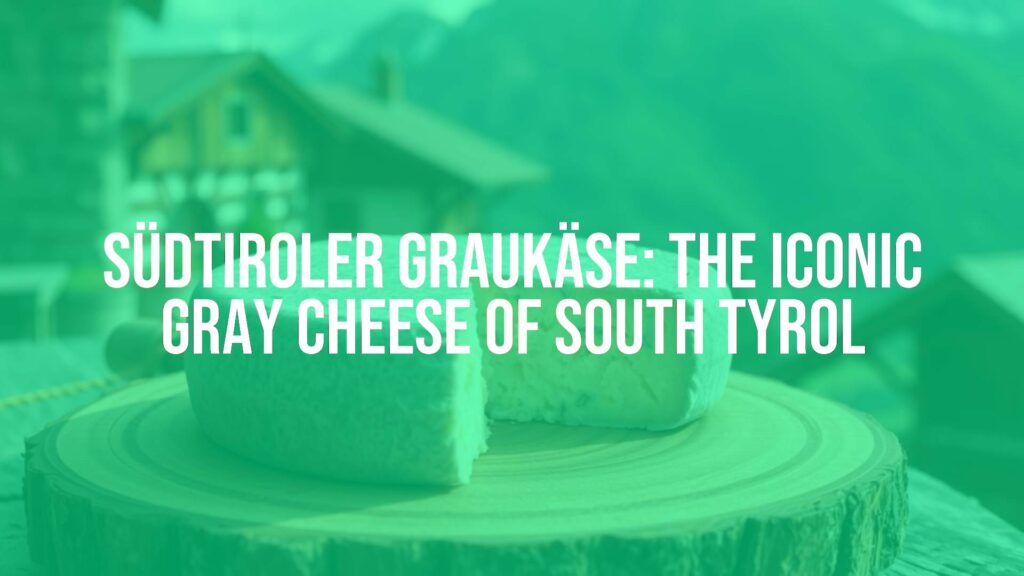Introduction to Südtiroler Graukäse
Südtiroler Graukäse, literally “gray cheese from South Tyrol,” stands out as one of the most distinctive cheeses of the Alpine region. Renowned for its pungent aroma, crumbly texture, and unique gray exterior, this cheese is a quintessential product of South Tyrol, a province in northern Italy that borders Austria. Südtiroler Graukäse offers not only a robust taste experience but also a direct link to the region’s agricultural past.
Distinctive Features
This traditional cheese is easily recognizable by its grayish rind—naturally developed due to specific mold cultures crucial to its character. Made primarily from fat-free cow’s milk, Südtiroler Graukäse is a low-fat, sour milk cheese. Its pale yellow to white interior is crumbly and moist, with an assertive flavor that ranges from tangy and sour to earthy and intensely aromatic, especially as it ages.
Historic Origins
The history of Südtiroler Graukäse stretches back hundreds of years. Historically, it was an ingenious way for mountain farmers to utilize the skimmed milk left over after butter production. The simple, resourceful method reflects the cheese-making traditions of rural Alpine communities, where nothing was wasted. Today, Südtiroler Graukäse is recognized under the European Union’s Protected Designation of Origin (PDO) scheme, safeguarding its identity and heritage.
Traditional Production Methods
Artisan producers still follow time-honored techniques. After separating cream for butter, the skimmed milk ferments naturally, often inoculated with previous batches. The mixture is gently warmed and allowed to coagulate. Once formed, the cheese is pressed into molds and aged in cellars where natural molds develop, lending Graukäse its hallmark gray surface and bold aroma. The resulting cheese is typically made without rennet and contains little to no fat, making it a rarity among Italian cheeses.
Culinary Context and Pairings
Südtiroler Graukäse plays a starring role in Alpine cooking. Traditionally, it is enjoyed in rustic dishes like “Graukäse Suppen” (gray cheese soup) or sliced over hearty rye bread. Its tang and assertiveness contrast beautifully with sweet and mild accompaniments such as apples, pears, or fresh butter. Locally, it’s also a key ingredient in “Knödel” (cheese dumplings), adding piquant richness to the dish. It pairs especially well with robust mountain breads, potatoes, and pickled vegetables, as well as local white wines or even a glass of cider.
Cultural Significance
Graukäse is more than just a traditional cheese; it is a cultural emblem of South Tyrol’s mountainous heritage. Its slow, natural production and connection to subsistence farming embody the resourcefulness and culinary creativity of the region’s people. Cheese festivals and fairs across South Tyrol often spotlight Graukäse, honoring its role in the local diet and rural economy.
Serving Tips and Enjoyment
When offering Südtiroler Graukäse, serve it at room temperature to appreciate its full aromatic profile. Its strong scent and sharp flavor may be an acquired taste for some, but its complexity rewards the adventurous palate. Try pairing bite-size pieces with hearty bread or mixing it into rustic salads for added depth. For a more traditional experience, enjoy it alongside smoked meats, pickles, or even a drizzle of honey to balance its tangy notes.
Exploring Regional Variations
While true Südtiroler Graukäse must meet PDO requirements, similar gray cheeses can be found in neighboring Alpine regions, often with subtle differences in flavor and texture depending on climate, pastures, and local practices. However, the South Tyrolean version remains distinct for its artisanal touch and protected status.

